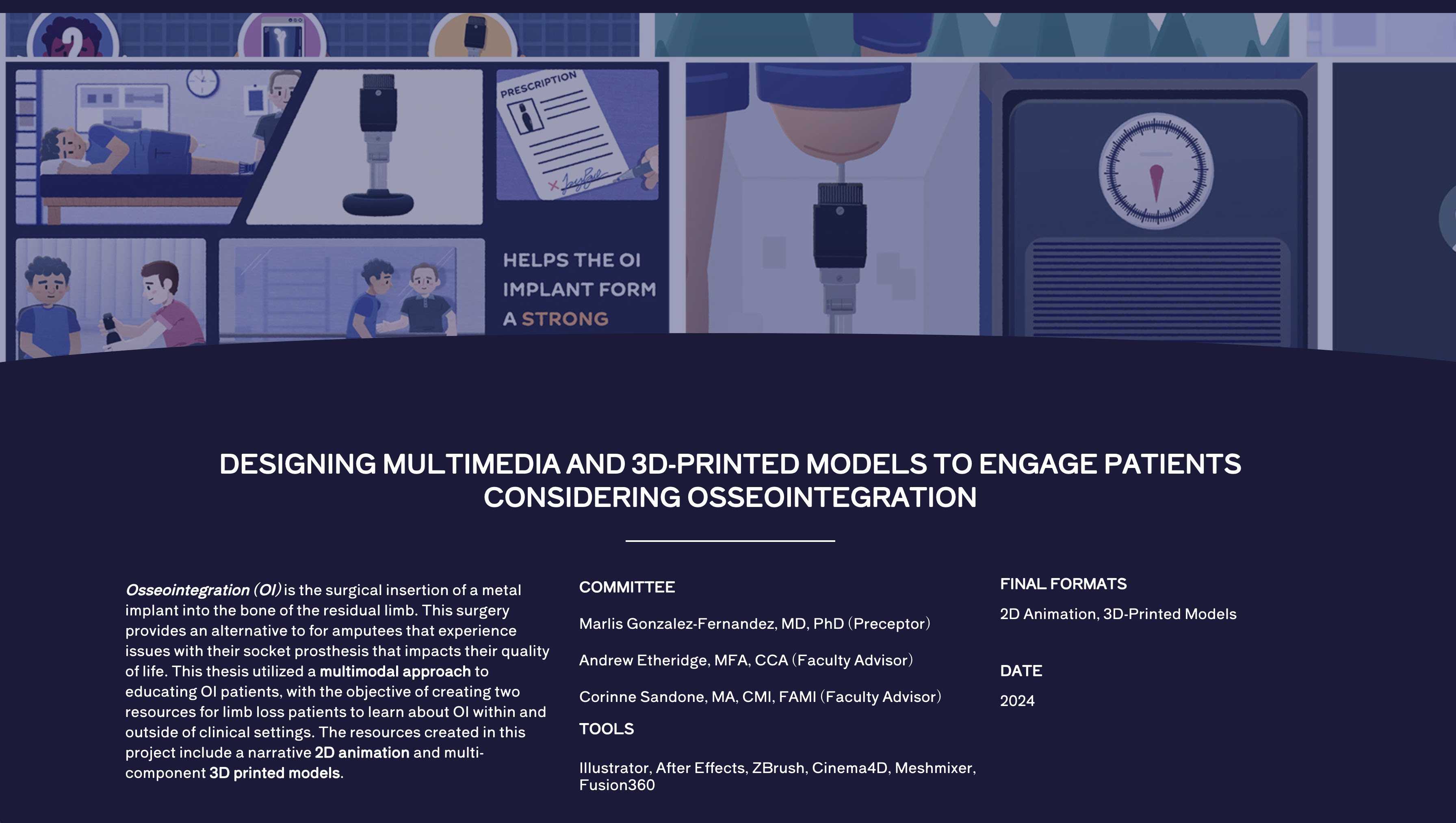Approximately 1 in 150 Americans currently live with limb loss and this number is expected to double by 2050 (Smidt and Bicknell 2024). While most lower limb amputees use a socket prosthesis to connect their residual limb to their prosthetic leg, some individuals develop skin problems that make the socket prosthesis uncomfortable to wear long-term. Osseointegration (OI), the surgical insertion of a metal implant into the bone of the residual limb, provides an alternative to a socket prosthesis. Johns Hopkins holds monthly OI Clinics for amputees who are either considering OI or have begun the process. The clinic lacked patient-focused visuals to represent the OI care pathway, which includes pre-op requirements, post-op rehabilitation, and long-term care. While multimedia forms of patient education are very effective and accessible via the internet, patients continue to benefit from traditional teaching methods used during clinic, such as in-person discussions and brochures. Studies demonstrate that 3D-printed models give patients a better understanding of their anatomy, leading to improved outcomes (Ghazi and Teplitz 2020; Sander et al. 2017).
This thesis utilized a multimodal approach to educating OI patients, with the objective of creating two resources for limb loss patients to learn about OI within and outside of clinical settings. The resources created in this project include (1) a narrative 2D animation and (2) multi-component 3D printed models. The four minute and 49 second animation addresses crucial aspects of the OI care pathway, including evaluation, surgery, rehabilitation, and long-term care of an OI implant. The two 3D printed models, printed at 50% actual size, visually depict a transfemoral leg after stages one and two of osseointegration with the OPRA™ implant. The models were designed for tactile interaction, serving to educate patients about surgical and rehabilitative considerations related to the OPRA™ implant. To understand the impact of these resources on patient engagement and knowledge, an IRB-approved study will be conducted. Using this patient-centric approach to education, it is our goal to empower patients with the knowledge necessary to make informed decisions about their osseointegration journey.
- Thesis Student: Tonya Burge, MA-2024
- Preceptor: Marlis Gonzalez-Fernandez, MD, PhD
- Department Advisors: Andrew Etheridge, MFA, CCA, CPed, CFo, CFm, and Corinne Sandone, MA
- https://jscholarship.library.jhu.edu/items/911ee1cf-a9d2-40b9-9d1f-b547c00198dc

